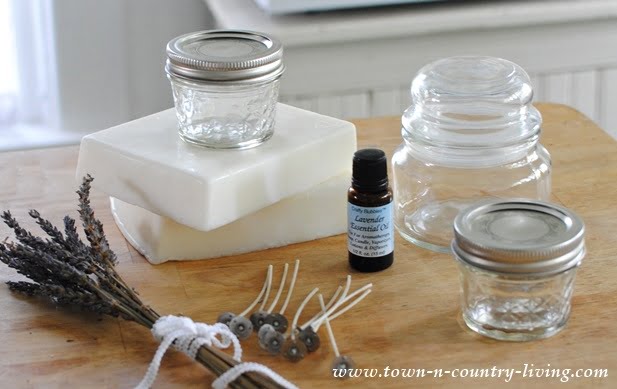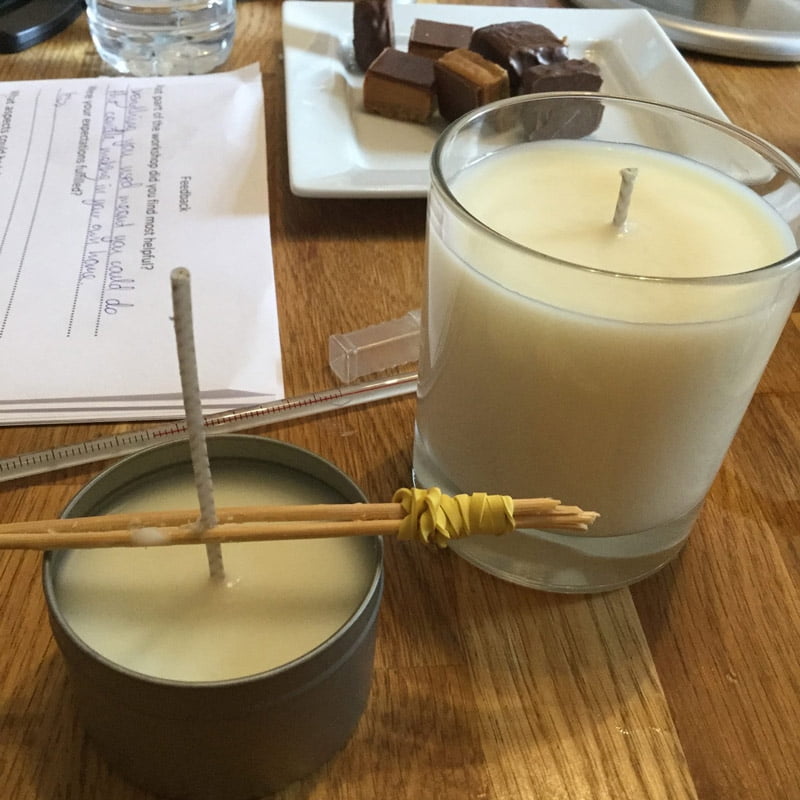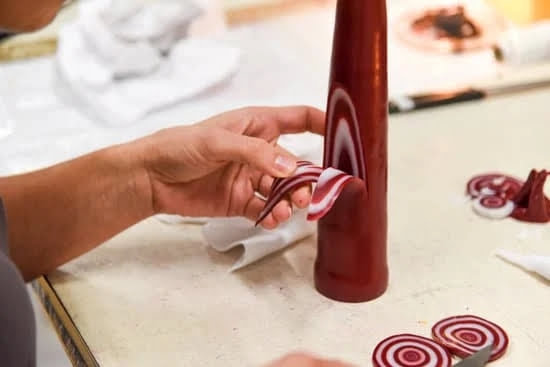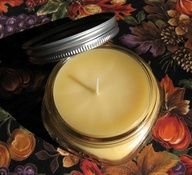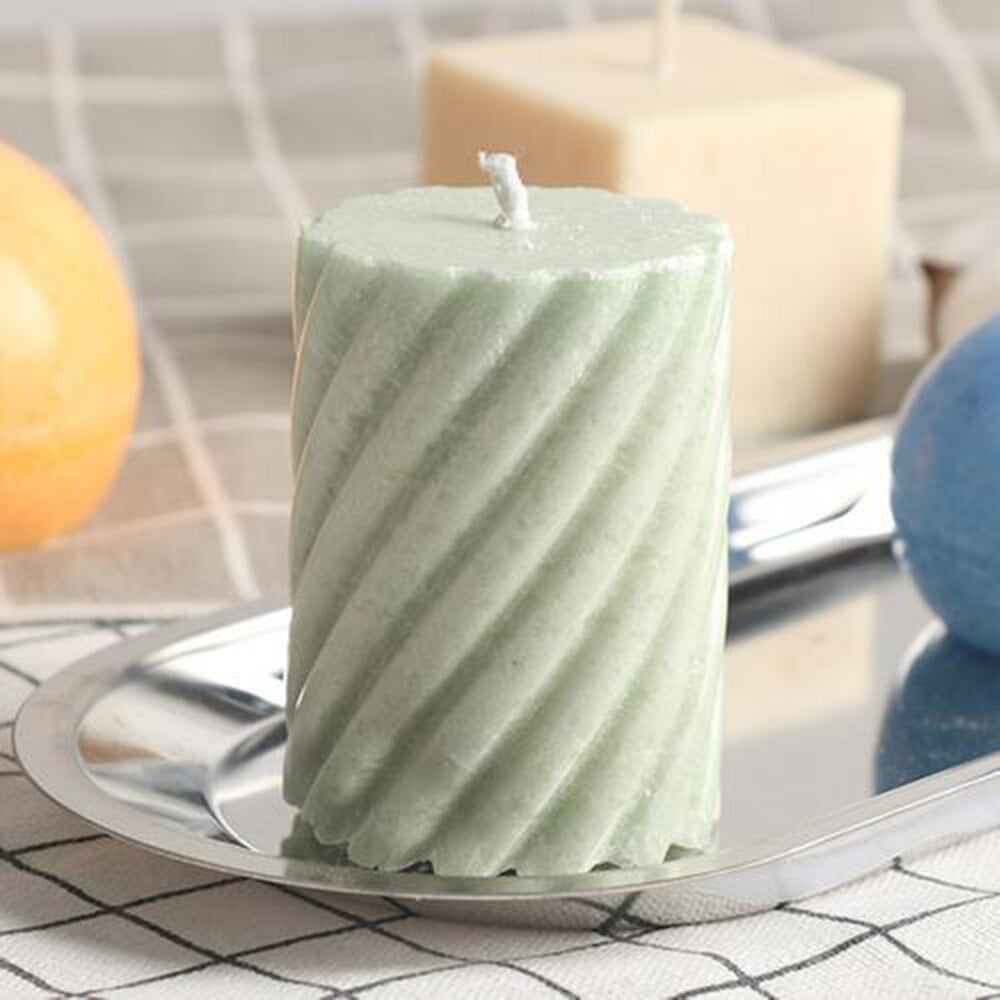Candle making is an art that requires precision and attention to detail. One crucial factor that plays a significant role in the success of candle making is temperature control. From melting the wax to adding fragrance and dye, every step in the process relies on maintaining the correct temperature. In this article, we will explore why temperature is important in candle making and discuss the benefits of using a thermometer throughout the process.
Temperature plays a vital role in all aspects of candle making, from selecting the right type of wax to achieving optimal scent distribution and color blending. Different types of wax have specific melting temperatures that must be followed to ensure proper consistency and prevent issues like overheating or incomplete melting. Additionally, the temperature at which fragrance oils are added can impact their throw, while incorrect cooling temperatures may result in uneven surfaces or sinkholes.
Using a thermometer in candle making provides numerous benefits for both beginners and experienced enthusiasts. It allows for accurate and consistent melting temperatures, ensuring optimal candle quality with every batch. A thermometer also enables control over cooling temperature, preventing common issues like sinkholes or uneven surfaces. Furthermore, it helps monitor temperatures during fragrance and dye addition, resulting in better scent distribution and color blending.
In the following sections of this article, we will delve deeper into understanding the role of temperature in candle making, explore different types of thermometers available, provide a step-by-step guide on how to use a thermometer effectively, troubleshoot common temperature-related issues, discuss alternative methods for temperature control without a thermometer, and ultimately emphasize the importance of temperature control for successful candle making.
Whether you are just starting out or have been creating candles for years, investing in a thermometer can greatly enhance your candle-making experience and improve your final product’s quality.
Understanding the Role of Temperature in Candle Making
Temperature plays a crucial role in the process of candle making. Understanding how temperature affects various aspects of candle making is essential for producing high-quality candles. This section will delve into the importance of the correct melting temperature for different types of wax, how temperature affects fragrance throw and scent stability, and the impact of temperature on pouring consistency and appearance.
Firstly, it is important to note that different types of wax have specific melting temperatures. For example, soy wax typically melts between 110-130 degrees Fahrenheit, while paraffin wax has a melting point between 120-160 degrees Fahrenheit. Knowing and maintaining the correct melting temperature is crucial for achieving optimal results in candle making.
If the wax is heated too quickly or at too high of a temperature, it can result in discoloration, bumpy surfaces, or even scorched wax. On the other hand, if the wax is not melted enough, it may not incorporate additives properly or lead to improper fragrance distribution.
Secondly, temperature also affects the fragrance throw and scent stability in candles. Fragrances are often added to enhance the ambiance and experience associated with burning a candle. However, if the wax is too hot when adding fragrances, they may evaporate too quickly or lose their potency over time. Conversely, adding fragrances at lower temperatures may result in poor scent distribution throughout the candle or cause them to settle unevenly.
Lastly, temperature plays a significant role in determining pouring consistency and appearance of candles. Pouring wax that is too hot can lead to shrinkage, frosting or cracking on top surfaces once cooled. Alternatively, pouring at temperatures that are too cool can result in uneven surfaces or an incomplete filling of molds or containers. Achieving proper pouring consistency requires careful control of temperature during both melting and cooling phases.
In summary, understanding how temperature affects different aspects of candle making is vital for producing high-quality candles. The correct melting temperature ensures optimal results for each type of wax, while temperature control during fragrance and dye addition enhances scent distribution and color blending.
Moreover, monitoring the pouring temperature helps achieve consistent appearance and avoids common issues like uneven surfaces or sinkholes. By understanding the role of temperature in candle making, candle makers can take necessary steps to achieve desired results and create candles that exceed expectations.
The Benefits of Using a Thermometer in Candle Making
Using a thermometer in candle making offers several benefits that contribute to the overall quality and success of the candles produced. Not only does it ensure accurate and consistent melting temperatures, but it also allows for better control over cooling temperatures, fragrance distribution, and color blending. Additionally, using a thermometer can help achieve the desired temperature for successful container and mold releases.
Ensuring accurate and consistent melting temperature for optimal candle quality
Melting wax at the correct temperature is crucial for producing high-quality candles. Different types of wax have specific melting points, and deviating from these temperatures can lead to issues such as poor adhesion, uneven burning, or insufficient fragrance throw. By using a thermometer, candle makers can accurately monitor the wax’s melting temperature and ensure that it reaches the ideal range for their chosen wax type.
Controlling the cooling temperature to prevent sinkholes and uneven surfaces
After pouring the melted wax into containers or molds, controlling the cooling temperature is essential to avoid common imperfections like sinkholes or uneven surfaces. If the wax cools too quickly or too slowly, it can result in these undesirable flaws. A thermometer allows candle makers to monitor and adjust the cooling temperature accordingly to achieve a smooth finish with an even appearance.
Monitoring the temperature during fragrance and dye addition for better scent distribution and color blending
Adding fragrance oils or dyes to candles requires careful consideration of temperature to achieve optimal results. Using a thermometer enables candle makers to know precisely when to incorporate these additives based on their respective recommended temperature ranges. This ensures proper dispersion of fragrances throughout the candle and helps create beautiful color blends without any clumping or separation.
Achieving the desired temperature for successful container and mold releases
Releasing candles from containers or molds can be challenging if they are not cooled to an appropriate temperature. If released too early, candles may stick or break. On the other hand, if released too late, they may shrink or be difficult to remove. By monitoring the temperature with a thermometer, candle makers can determine the optimal time to release candles, allowing for easier removal and preserving their shape and appearance.
Overall, using a thermometer in candle making provides several advantages that contribute to the successful creation of high-quality candles. From accurate melting temperatures to controlled cooling temperatures and precise addition of fragrances and dyes, a thermometer is an invaluable tool for any candle maker looking to achieve consistent results. Investing in a reliable thermometer not only ensures the quality of the final product but also saves time and resources by avoiding potential mistakes caused by temperature-related issues.
Different Types of Thermometers for Candle Making
When it comes to candle making, having the right tools and equipment is crucial for achieving optimal results. One tool that is essential for temperature control in candle making is a thermometer. With a wide range of thermometers available on the market, it’s important to understand the different types and their advantages.
- Traditional glass thermometers: These are the most commonly used thermometers in candle making. They consist of a glass tube with a liquid inside that expands and rises when heated. Some pros of using glass thermometers include their affordability and ease of use. However, they can be fragile and break easily if not handled with care.
- Digital thermometers: Digital thermometers are highly accurate and easy to read, making them popular among candle makers. They have a digital display that shows the exact temperature, allowing for precise temperature control. Some advantages of digital thermometers include their speed in measuring temperature and their convenience in terms of battery-powered operation.
- Non-contact infrared thermometers: These innovative thermometers allow you to measure temperature without physically touching the object being measured. They use infrared technology to detect heat radiation emitted by an object or surface. Non-contact infrared thermometers are useful for quick temperature checks during various stages of candle making without disturbing the wax or fragrance oils.
With these different types of thermometers available, it’s important to choose one that best suits your needs and preferences as a candle maker. Consider factors such as accuracy, ease of use, durability, and budget before making your selection.
Step-by-Step Guide on How to Use a Thermometer in Candle Making
Using a thermometer is essential for precise temperature control in candle making. By understanding how to use a thermometer correctly, you can ensure that your candles turn out beautifully every time. Here is a step-by-step guide on how to use a thermometer in candle making:
- Preparing the thermometer for use and ensuring its cleanliness: Before using a thermometer, make sure it is clean and free from any residue or previous candle wax. If you are using a glass thermometer, wash it with warm soapy water and dry it thoroughly. For digital thermometers, ensure that the probe is clean and ready for use.
- Monitoring the wax melting temperature during the initial phase: Once you have prepared your wax by measuring and weighing it, place it in a double boiler or heating pot. Attach the thermometer to the side of the pot with the tip of the probe submerged in the wax, without touching the bottom of the pot. Heat the wax slowly while constantly monitoring the temperature.
- Checking the temperature during fragrance and dye addition: After your wax has melted completely, it’s time to add fragrance oils and dyes if desired. Before adding these ingredients, check their recommended temperature ranges for optimal performance. Use your thermometer to monitor and ensure that your melted wax stays within this range while incorporating fragrance oils or dyes.
- Controlling the cooling temperature before pouring into containers or molds: Once your fragrance oils or dyes are fully mixed into the melted wax, it’s time to allow it to cool down slightly before pouring into containers or molds. Depending on your recipe and desired outcome, different temperatures may be required before pouring. Continuously monitor this cooling stage with your thermometer until you reach the desired pouring temperature range.
By following these steps and consistently monitoring temperatures throughout the candle making process, you can achieve better results and minimize issues such as sinkholes and uneven surfaces.
Table: Temperature Ranges for Different Candle-making Activities
| Activity | Temperature Range |
|---|---|
| Melting Wax | 120-180°F (49-82°C) |
| Addition of Fragrance Oils and Dyes | 150-185°F (66-85°C) |
| Cooling Before Pouring into Containers or Molds | 125-145°F (51-63°C) |
Remember, investing in a thermometer is an invaluable tool for candle makers of all levels. It allows you to have better control over your candle-making process and ultimately produces consistent and high-quality candles. Don’t hesitate to incorporate this simple device into your candle making routine to elevate your craft.
Troubleshooting Common Temperature-related Issues in Candle Making
When it comes to candle making, temperature plays a crucial role in achieving the desired quality and appearance of your candles. However, even with the use of a thermometer, issues can still arise due to various factors. In this section, we will explore some common temperature-related problems that candle makers may encounter and provide solutions to troubleshoot these issues.
One common problem that can occur is the presence of uneven surfaces or sinkholes on the candles. This is often caused by incorrect cooling temperatures. If the cooling temperature is too high, it can lead to uneven cooling and result in surface irregularities or sinkholes.
To fix this issue, it is important to ensure that you are allowing enough time for the candle to properly cool at an appropriate temperature. Additionally, you can also try using a lower pouring temperature, which will allow for slower cooling and reduce the likelihood of these problems occurring.
Another issue that can arise is poor scent throw due to improper temperature control during fragrance addition. Fragrances perform best within certain temperature ranges, so if the wax is too hot or too cold when adding fragrances, it can affect their distribution throughout the candle and result in a weaker scent throw.
To address this problem, it is essential to monitor and maintain the recommended temperature range when adding fragrances. If you find that your candles have weak scent throw despite following temperature guidelines, you may need to adjust the quantity of fragrance oil used based on variations in temperature.
In addition to fragrance issues, improper temperature control during dye addition can also lead to problems with color blending. Dyes are sensitive to temperature changes, and if added at inconsistent temperatures or outside of their recommended range, they may not blend evenly into the wax mixture.
To overcome this problem, make sure to monitor and maintain the appropriate temperature range for dye addition as specified by your dye manufacturer. Adjusting dye quantities based on any variations in temperature can also help ensure consistent and even color distribution in your candles.
| Common Temperature-related Issues | Troubleshooting Solutions |
|---|---|
| Uneven surfaces or sinkholes on candles | – Allow enough time for proper cooling at an appropriate temperature
|
| Poor scent throw | – Monitor and maintain recommended temperature range during fragrance addition
|
| Inconsistent or uneven color blending | – Monitor and maintain appropriate temperature range for dye addition
|
Alternative Methods for Temperature Control in Candle Making
While using a thermometer is the most accurate and reliable way to control temperature in candle making, there may be times when you don’t have one readily available or prefer to explore alternative methods. Here, we will discuss some alternative methods for temperature control in candle making, along with their pros and cons.
Understanding the use of double boilers and water baths as temperature regulators
One common alternative method for temperature control in candle making is using a double boiler or a water bath. This involves placing the container or pot with wax inside a larger pot filled with water. As the water heats up, it indirectly melts the wax, ensuring that it doesn’t get too hot or burn. The water acts as a buffer between the heat source and the wax, providing a gentler and more controlled heating process.
Using a double boiler or water bath can be effective in preventing overheating and scorching of the wax, especially when working with delicate or heat-sensitive waxes. However, it’s important to note that this method may result in slower melting times compared to directly heating the wax. Additionally, it requires extra equipment and careful monitoring of the water level to maintain consistent temperatures throughout the melting process.
Exploring other indicators and techniques for determining temperature without a thermometer
Another approach to temperature control without a thermometer is by relying on visual cues and other indicators. For example, you can observe the consistency of the wax as it melts to approximate its temperature. Higher temperatures will result in a more liquid-like appearance, while lower temperatures will cause the wax to appear thicker and more solid.
Additionally, some experienced candle makers rely on “skin tests” to determine if their wax is at the desired temperature. This involves dipping a small spoon into the melted wax and quickly touching it against your skin (be cautious not to burn yourself). If it feels uncomfortably hot or leaves a mark on the skin, the wax is likely too hot. Conversely, if it feels lukewarm or barely warm, it may be too cool for pouring.
While these visual cues and skin tests can provide some guidance, they are subjective and less precise compared to using a thermometer. They require experience and practice to accurately interpret the indicators and may not be suitable for beginners or those seeking consistent results.
Evaluating the pros and cons of using alternative methods over a thermometer
When considering alternative methods for temperature control in candle making, it’s important to weigh their advantages and disadvantages against using a thermometer. While alternative methods can be useful in certain situations, they often lack the precision and reliability that a thermometer provides.
Using a thermometer allows for accurate temperature readings, ensuring consistent results and high-quality candles. It reduces the risk of overheating or underheating the wax, which can result in various issues such as poor scent throw, uneven surfaces, or difficulties with mold release.
Ultimately, while alternative methods might suffice temporarily or in emergency situations, investing in a reliable thermometer is highly recommended for long-term success in candle making. A thermometer will provide you with greater control over your candle-making process and yield more consistent and professional results each time you create candles.
NOTE: This section does not have a separate conclusion paragraph as per instructions.
Final Thoughts
In conclusion, temperature control is a crucial factor in successful candle making. Throughout this article, we have highlighted the various ways in which temperature affects different aspects of the candle-making process, such as melting consistency, fragrance distribution, and appearance. By understanding these impacts and using a thermometer, candle makers can ensure optimal results and avoid common issues.
Using a thermometer in candle making offers several benefits. Firstly, it allows for accurate and consistent melting temperatures, leading to high-quality candles with desirable attributes. Additionally, temperature monitoring during fragrance and dye addition ensures proper scent distribution and color blending. Furthermore, controlling the cooling temperature prevents sinkholes and uneven surfaces that can ruin the appearance of candles. Investing in a thermometer is an investment in precision and control.
There are different types of thermometers available for candle making. Traditional glass thermometers are commonly used but may have some drawbacks. Digital thermometers offer advantages like accuracy and convenience. Non-contact infrared thermometers are useful for quick temperature checks without direct contact with the wax. Candle makers should choose a thermometer that suits their needs and preferences.
Frequently Asked Questions
What kind of thermometer do I need to make candles?
When it comes to making candles, it is important to have a reliable and accurate thermometer called a candle thermometer. This type of thermometer is specifically designed for use in the candle-making process and is typically made of metal with a long narrow stem and a clip or hook for easy attachment to the container or melting pot being used.
Candle thermometers are calibrated to measure high temperatures accurately, usually ranging from about 100°F (38°C) up to 400°F (204°C). It’s crucial to choose a thermometer that can withstand the heat of molten wax, as using an inappropriate thermometer may break or give inaccurate readings.
Why is thermometer important in candle making?
The thermometer plays a vital role in candle making as it allows the candle maker to monitor and control the temperature at different stages of the process. Temperature control is crucial because different types of waxes require specific heating and cooling conditions in order to achieve desirable results. For instance, if the wax is not heated enough, it may not fully melt or incorporate fragrance properly.
On the other hand, overheating can cause discoloration, poor scent throw, or even alter the burning characteristics of the finished candle. Therefore, having an accurate and reliable thermometer helps ensure that the wax is heated and cooled within the recommended temperature range for optimal performance.
Can you use a food thermometer for candle making?
While there are food thermometers available on the market, they are not typically suitable for candle making due to their limited temperature range and design features. Food thermometers are primarily designed for lower temperatures like those used in cooking meat or baking. They might not be able to handle higher temperatures necessary for melting wax safely or provide accurate measurements at those levels.
Furthermore, food thermometers often lack features such as clips or hooks specifically designed for attachment to candle containers or melting pots used during the process. Consequently, it is best to invest in a dedicated candle thermometer that can handle high temperatures reliably and deliver accurate readings throughout your candle-making journey.

Welcome to my candle making blog! In this blog, I will be sharing my tips and tricks for making candles. I will also be sharing some of my favorite recipes.

